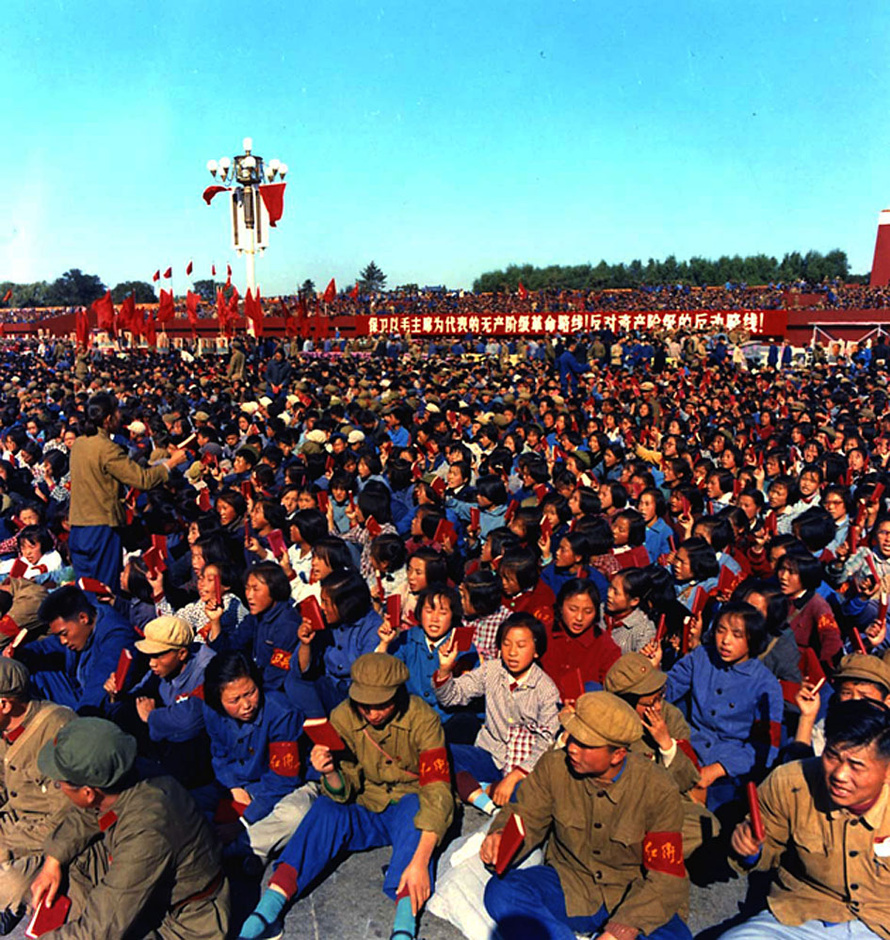The very concept of “hungweibing” (红卫兵) appeared in China almost simultaneously with the beginning of the Cultural Revolution, in 1966. This group was originally formed by 40 students from Beijing Tsinghua High School. There are two points of view on the emergence of the Red Guards: some believe that they arose by chance, others that it was secretly prepared by Mao Zedong and his associates. In any case, Mao Zedong saw them as a means of helping to bring about the cultural revolution. To make it clearer, I will say that the hungweipings are, in the full sense of the word, punitive detachments, which, by order from above, were sent to various parts of the country to defeat party organizations and persecute “dissidents”.
In August 1966, Mao Zedong and his supporters staged a rally of the hungweipings, at which they expressed words of support. For almost three years, classes in universities, secondary, and then primary schools were suspended.
Thus, the work of the Red Guards began throughout China. They got rid of all names that in any way indicated the past. Streets, restaurants, shops, schools, institutes, etc. were renamed.
The “100 positions of the hungweipings” were developed, among which were the following:
- propaganda of the ideas of Mao Zedong and the cult of his personality, the widespread use of his sayings and everywhere to attach plates with his sayings (sometimes it came to the absurd – every cyclist had to have a plate with his sayings, and every resident of China should always have a collection of his sayings with him).
- stop recognizing the authority of the head of the family
- people ranked among the “unclean categories” (former landowners, right elements, kulaks, counter-revolutionaries and their children) had to put on a sign with the words “evil spirits” when leaving the house.
There was no age limit for joining the Red Guards, so often even small children were included in their ranks.
In the same August 1966, the First Headquarters was established to control the activities of the Red Guards. The “first headquarters” united various universities and institutes of the country.
It must be said that due to the involvement of a large number of people in the Cultural Revolution, a demarcation began in the Hongwei organizations themselves. Some people began to defend their relatives, who are also being attacked. Already from the beginning of September 1966, newspapers and magazines not devoted to the case of the hungweipings were closed. On the other hand, a huge number of Hongwei newspapers appear, which were printed on the same equipment that was taken from closed newspapers and magazines.
A wave of clashes between workers and peasants and the Red Guards’ detachments swept across the country. When it became clear that the hungweipings had fulfilled their task and were no longer needed, Mao Zedong and his entourage dealt with them as brutally as they had dealt with Mao’s opponents earlier.
Based on the article by V. N. Usov “The Hungweipings – Maoist assault detachments.”

人民万岁